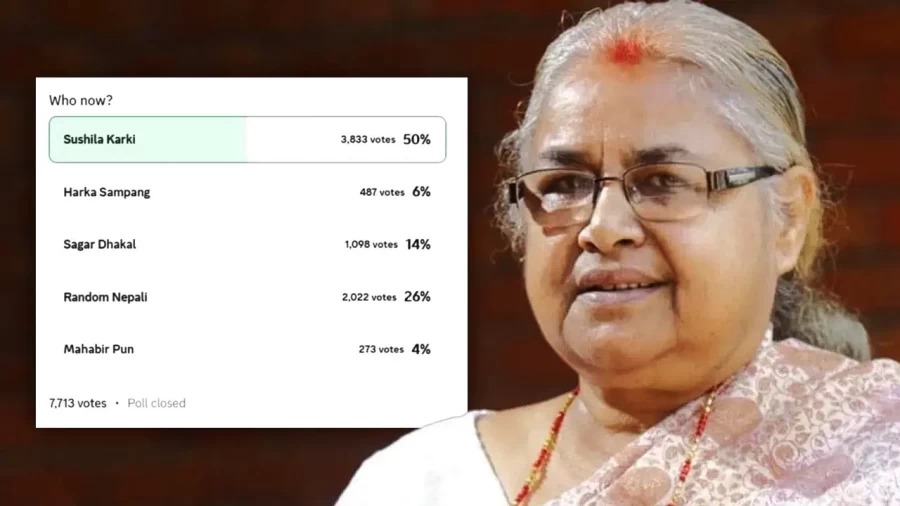
In Nepal’s political history, September 2025 will be known for a youthquake that deeply impacted the polity of the country. This Gen-Z movement can also be equated with the Nepali version of the French Revolution. In France, the monarchy was abolished; in Nepal, long-entrenched political parties were sidelined, at least for now.
The nation’s youth, armed with smartphones and a battle cry for accountability, declared war against political parties and their corrupt leaders rather than against the political system. But it did not stop there; finally, the political leaders had to go into hiding under the security of the Nepali Army. Their astounding achievement—compelling the government coalition to resign in 36 hours—was only the first volley in a larger revolution targeted at the fundamental pillars of a dysfunctional state: a corrupt judiciary, a bloated bureaucracy, unstable leaders, inequitable institutions, and “NepoKids.”
The trigger was a typical overreach by an out-of-touch authority. On September 4, the Ministry of Communication and Information Technology issued a decree banning unregistered social media platforms, sparking frustration. For Gen-Z, digital spaces are not luxuries but essential public squares, libraries, and organizational hubs. The government’s attempt to restrict them was the final straw. The accompanying “Gen-Z movement,” which culminated in the riots on September 8, was a rejection of the entire political elite rather than a single policy.
It was a visual filter applied to the nation’s governance, with anyone from the old guard simply clipped out of the frame. Gen-Z realized that the recurring coalition governments were only a symptom; the sickness was entrenched in institutions meant to protect and serve the public that had instead become emblems of failure. They were neither democratic nor did they serve the interests of broader society; in contrast, they had become a burden on the state.
The judicial system and courts, once revered as the temple of justice, had become a public auction house. The Gen-Z movement exposed cases long buried, decisions favoring the powerful, and allegations of widespread judicial corruption. For a generation expecting a fair future, a corrupt court was not an outlier; it was the principal impediment to any type of genuine change, shielding the corrupt rather than condemning them. Moreover, political parties used the courts to serve their own interests. The appointment of judges in the court has been partisan to the extent that it failed to maintain the sanctity of the judiciary.
Singha Durbar, the central secretariat, lost its reputation as the administrative powerhouse and instead came to represent an overburdened, ineffective, and dishonest bureaucracy. It symbolized a maze where political favoritism took precedence over merit, public service was a myth, and files went to die unless greased with bribes. The campaign saw it as a stronghold that required democratization and transparency rather than as a mere government office. Likewise, the parliament has never really worked for the national interest. It was not truly involved in the policy-making process.

Democracy has devolved into a parody dominated by three recycled faces who switched parties and ideologies in pursuit of power. The young viewed them as gatekeepers of the status quo who favored their inner circles solely, rather than as visionary leaders, turning Nepali politics into a game of musical chairs in which the general population had no winner.
The movement also shifted its focus to the intersection of influence and wealth. Big houses were viewed as monopolists who influenced laws to their advantage, resulting in extreme economic disparity. Elite schools perpetuated class privilege. Most damningly, mainstream media outlets were revealed to be power brokers rather than watchdogs, choosing sides, influencing stories to suit the political and commercial goals of their owners, and contributing significantly to the very issues they were meant to criticize.
A new and powerful emblem emerged: the “NepoKids.” The heirs of political and business dynasties became living symbols of the inequality that the revolution sought to eliminate. Their foreign education, fancy lives, and rapid rise to power were in stark contrast to the suffering of regular youth. They represented a system in which success was inherited, not achieved, and luxury was a birthright rather than the result of merit.
Therefore, the Gen-Z movement was more than a change of government; it was a rejection of an ecosystem of power. Nepal’s Gen-Z did more than just shake a coalition—they subpoenaed the entire establishment by using digital technologies to organize, avoiding traditional media to disseminate their uncensored message, and directly challenging these emblems of failure.
The PM’s resignation and dissolution of parliament marked only the end of the beginning, not the end of their revolution. The message from Kathmandu’s streets is unmistakable: the digital generation is here, it is observing, and it will not put up with a system in which opportunity is hoarded by a select few, bureaucracy is crooked, leadership is unstable, and justice is for sale. The old frame is broken; a new one is being built.